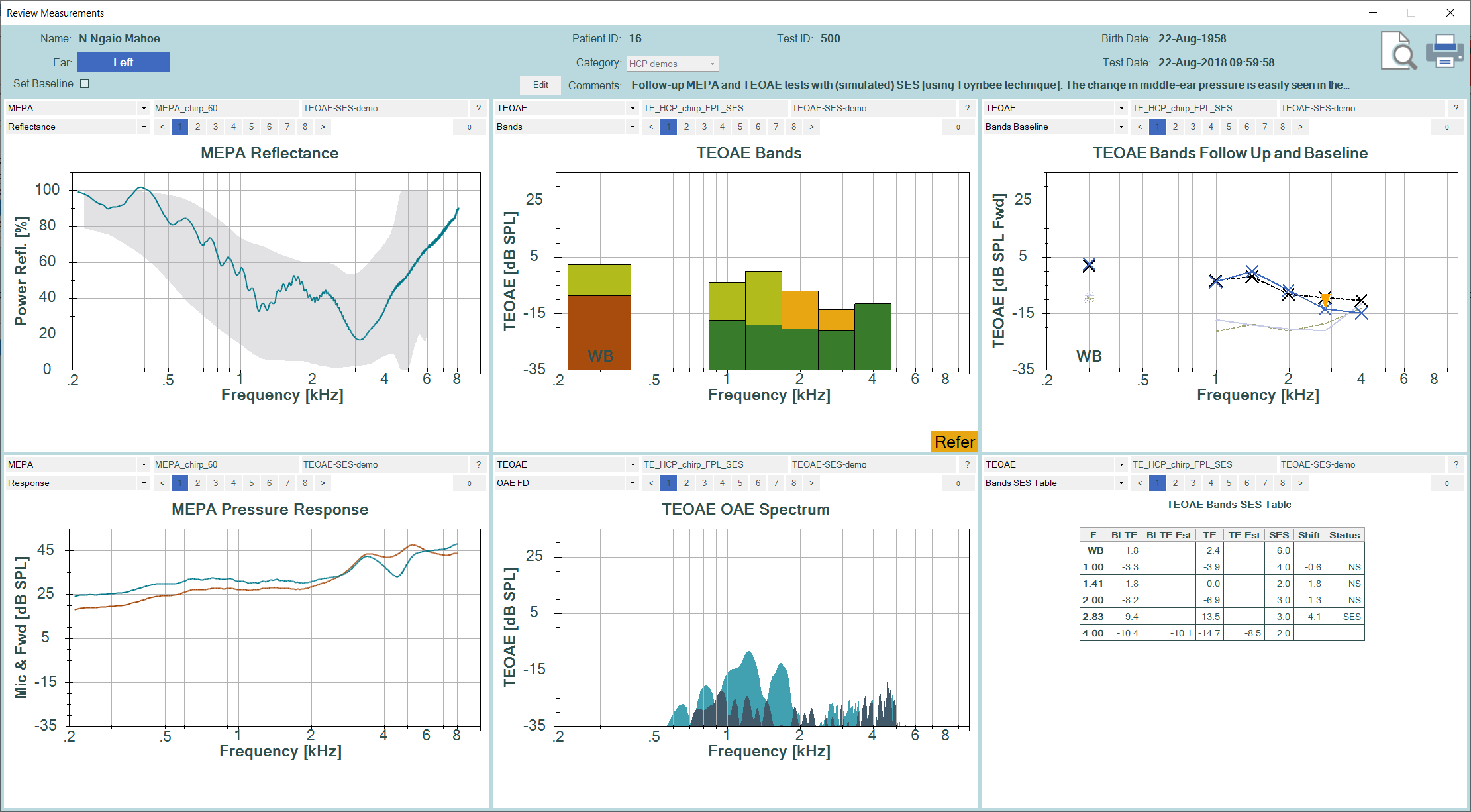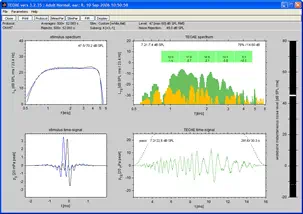

Modules
TEOAE
TEOAE testing
Transient-evoked otoacoustic emission tests provide a quick and objective test of the cochlea's outer hair cells. A series of transient stimuli (wideband clicks or chirps) are sent into the ear canal. The resulting TEOAE, coming from the inner ear through the middle ear, is measured in the ear canal between stimulus presentations. In less than a minute, a wideband assessment is achieved.
For use with newborns, infants, children, and adults.
TEOAEs on OtoStat

TE Module Specs
To run OtoStat + TE, you need an OtoStat monaural or OtoStat binaural hardware system, with the TE Measurement Module.
- Preset measurement protocols included or customize your own.
- Save your favorite protocols by name.
- Synchronized spontaneous otoacoustic emissions mode.
- Stimulus Types: rectangular click, flat group-delay chirp, linear group-delay chirp, Dau group-delay chirp, Shera group-delay chirp.
- Customizable stimulus bandwidth, duration, level, white or pink spectrum, polarity.
- Adjustable inter-stimulus interval.
- Linear and non-linear stimulus presentation modes.
- Adjustable high and low pass TEOAE response filters.
- Adjustable TEOAE response window.
- Automated noise rejection.
- Observe stimuli acoustically and electrically in real time.
- Spectrum compensated in-the-ear stimulus calibration, using standard or forward-pressure level ensures a flat spectrum.
- Pass / Refer results clearly indicated and user configurable.
- Improved stopping rules terminate the test early once Pass results are achieved. Wideband and narrowband rules are individually customizable.
- Compare TEOAE results; show significant emission shifts.
- Set criteria for low-level TEOAEs that may indicate susceptibility to NIHL.
TEOAEs on HearID

TE Module Specs
To run HearID + TE, you need a HearID software and hardware system, with the TE Measurement Module.
- Clinical and Research modes.
- Preset measurement protocols included.
- Save your favorite protocols by name.
- Synchronized spontaneous otoacoustic emissions mode.
- Stimulus Types: rectangular click, biphasic rectangular click, Gaussian click, differentiated Gaussian click, flat group-delay chirp, linear group-delay chirp, Dau group-delay chirp, Shera group-delay chirp, tone burst.
- Customizable stimulus bandwidth, duration, level, white or pink spectrum, polarity.
- Adjustable inter-stimulus interval.
- Linear and non-linear stimulus presentation modes.
- Adjustable high and low pass TEOAE response filters.
- Adjustable TEOAE response window.
- Adjustable graphical noise rejection level, plus optional automated mode.
- Observe stimuli acoustically and electrically in real time.
- In-the-ear probe calibration, including option for spectrum compensation.
- Pass / Refer results clearly indicated and user configurable.
- Improved stopping rules terminate the test early once Pass results are achieved. Wideband and narrowband rules are individually customizable.
- FDA 510(k)